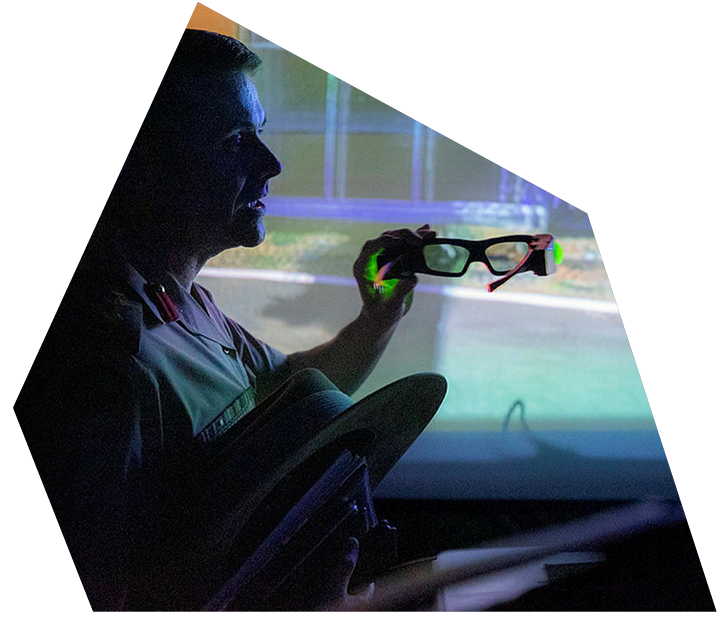
Why Australia needs a strong defence industry innovation model

Australia is under pressure to react to the era of competition and crisis we face in our region.
To strengthen our position, Australia must seek a blending of commercial and military interests that isn't yet sufficiently nurtured in this country.
The Defence Strategic Review (DSR) says this of Australia's innovation structure: "Defence's current approach to capability acquisition is not fit for purpose. The system needs to abandon its pursuit of the perfect solution or process and focus on delivering timely and relevant capability."
A measure of disruption to the military-research-industry ecosystem is essential to focus the Department of Defence on results rather than process.
There is already government support for technology commercialisation pathways for defence in universities and local industry, such as the current Labor government's National Reconstruction Fund and the former government's Modern Manufacturing Initiative.
However, these are too conventional and process-heavy to field rapid responses to a pressing regional situation. The application procedure for these funding mechanisms is a deterrent to smaller companies and to innovation. In contrast, the US and UK defence structures have established strong mechanisms for fast innovation and are reaping the benefits.
In our geopolitical climate, innovation at speed in the Defence sector is compulsory.
Defence released a heavily redacted report, the Independent Review of the Major Service Providers. It provides insight into the value that the current restrictive procurement structure represents for those few providers with access to it.
The report shows the urgent need for faster innovation in the Defence system. The feedback from senior Defence people stated clearly that they want "access to new blood with non-Defence expertise as a source of innovation and ideas for efficiency gains, improved planning, and risk management".
It goes on to stay that Defence is "challenged by the volume of projects it is required to undertake, and the resources it has available to do them". Embracing a new model of industry research, targeting civilian products for testing and repurposing could provide these senior figures what they are looking for, and on a budget.
A simple way to introduce disruption to the defence industry sector is to look at other sectoral models for research and innovation. Re-purposing of civilian technology and equipment offers a faster route to innovation in the defence sector. The pharmaceutical industry re-purposing model offers a structured pathway that could meet certain Australian Defence Force requirements, and it could even support growth in the local industry.
The model is scientific, but still comparable to the way the Ukrainians have become experts at adapting civilian technology to military use. They have consistently surprised and outpaced the Russians with their innovations. Early in the conflict civilian drones were used in reconnaissance missions, identifying, and tracking enemy targets, planning and supporting the execution of troop movements, or directing strikes on Russian targets.
Until February 2023, Elon Musk's Starlink, a civilian satellite internet constellation system, was used to control drones patrolling Ukraine and targeting Russian positions. Mobile phones are adapted and exploited for military use.
The Ukrainians have created a new tool, known as Delta, a comprehensive situational awareness system developed by the Innovation Centre within Ukraine's Defence Ministry, it is intuitive, easy to use and akin to Google Maps for the military.
The feedback loop is fast, and a solution moves from the experimentation phase to the battlefield in months, or even days.
In the pharmaceutical sector, for more than a decade now, research and commercialisation on repurposing approved drugs and treatments have outstripped the model of the new discovery.
It takes too long to get a new drug tested in the lab, then perhaps on animals and finally on humans. A potent example of this research to patient lag, is the Australian Gardasil vaccine against the human papillomavirus, responsible for virtually all cervical cancers.
It was developed by University of Queensland researchers - Professor Ian Frazer and his colleague, the late Dr Jian Zhou. They started researching int he 1990s and finally in 2006, Gardasil was approved by the Therapeutic Goods Administration.
We surely still need pure research of this nature, and the applied sciences. We will need trained physicists for our nuclear submarines and a corps of nuclear sciences trained officers. Australia is at the vanguard of quantum computing technology. These aspirations and gains developed in long-term research program will always form the basis of great leaps in human knowledge.
To go some way towards a faster pathway from laboratory to patient, drug repurposing or repositioning is a process used by pharmaceutical companies and university researchers to identify new therapeutic uses for old, existing, and available drugs or therapies. It can't solve every problem, new research is still important, but it is a driver of speed and innovation in patient treatment.
Even newly developed drugs are now being put through this process to test different targets. The strategy has proven to be highly effective as some steps, (such as clinical laboratory trials, animal trials and human trials) don't need to be repeated, leading to savings in time and money. It is a low-cost method and increases success rates.
It is so successful because the existing medicines are already known to work and are already known as safe for humans. The time between research, testing and delivering treatment to the patient is dramatically decreased.
It is now seen as a valuable strategy particularly for rare and difficult-to-treat diseases. One of the best-known examples is Viagra, which was originally produced by Pfizer to treat hypertension and angina. Anti-parasitic drugs such as chloroquine, used for more than 70 years, have been re-purposed for the treatment of COVID-19.
To learn from the Ukrainians, Australia could seek out innovative civilian technology, test it according to scientific processes and adapt it quickly to military needs.
Like the pharmaceutical sector, the Defence industry is dealing with precious human lives. The Australian Defence Force needs rapid, timely and relevant solutions to a developing geo-political situation that will outrun the slow pace of pure science, or even applied needs could go some way towards creating a culture that is innovative and responsive to our warfighters' problems.
Real and focused lessons can be learned from the bunkers in Kyiv experiencing the heat of war and we could benefit to make the quick, yet high-value advances we need for our forces now.
Rowena Judd is a writer and stakeholder manager with experience in Europe, Asia and Australia. She has worked in conflict zones on UN peacekeeping missions and has extensive public sector experience, including at the Department of Social Services, CSIRO and the Australian National University.
